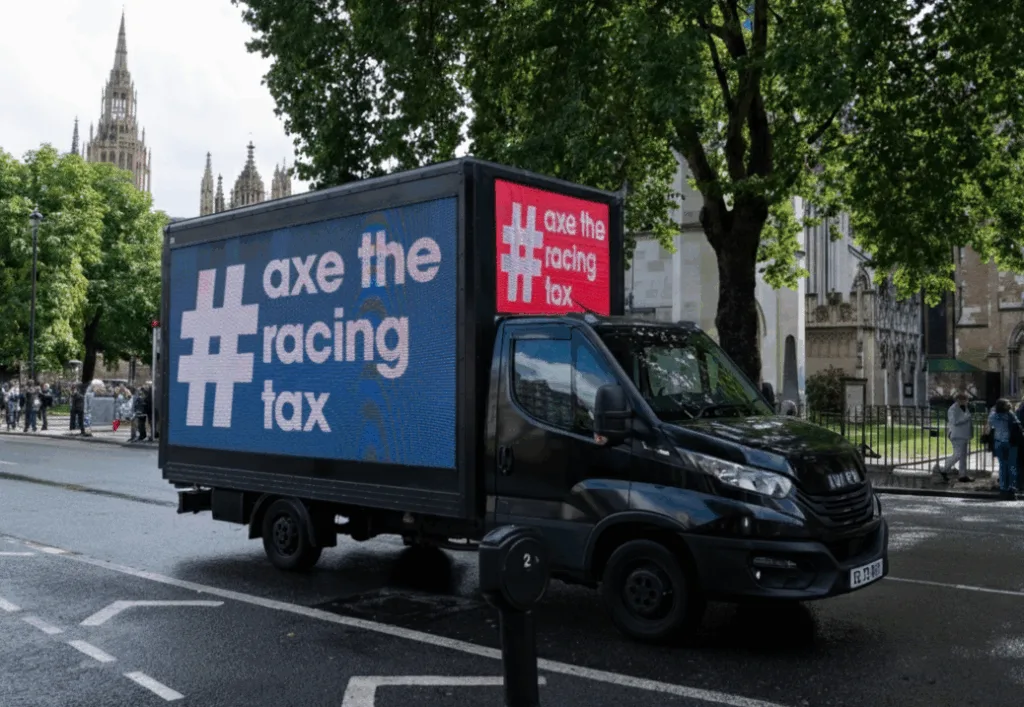
Horse Racing Makes Its Voice Heard
Today—Wednesday 10 September 2025—marks a landmark moment in British sport: for the first time in modern history, all horse racing in Britain has been halted in protest over a proposed rise in betting tax.
Four major meetings at Lingfield, Carlisle, Uttoxeter and Kempton were cancelled and rescheduled—a bold move by jockeys, trainers, racecourses and the British Horseracing Authority (BHA) to deliver a clear message to Westminster.
Raising Awareness Is Itself a Victory
This one-day stand is much more than a short-lived disruption. It’s a spotlight on a deeper existential threat: the Treasury’s plan to harmonise remote betting tax, raising racing’s rate from 15% to 21%, aligning it with online casinos and slots. BHA modelling warns this could slice £66 million a year in revenues and endanger up to 2,750 jobs in its first year alone.
A strike like this grabs headlines, focuses attention, and unifies stakeholders in a way press releases never could. That, in itself, is strategic success.
Racing’s Missed Chance on Affordability Checks
If we’re honest, racing has often been slow to anticipate challenges—and affordability checks are the perfect example. For years, campaigners and politicians flagged the issue of problem gambling and affordability. Instead of leading the discussion, shaping solutions, and protecting both its customers and its product, racing largely reacted only once measures were forced upon it.
The result? Punters left frustrated, accounts restricted, and yet another generation of casual fans drifting away. The industry had the chance to work hand-in-hand with betting exchanges, traders, and tech platforms to design a smarter, fairer system that protected at-risk individuals while keeping the sport accessible and exciting.
That opportunity wasn’t taken, and racing is still paying the price for a lack of proactivity.
How Exchanges Could Have Helped
Betting exchanges like Betfair already hold a wealth of transparent data: betting histories, profit and loss records, and market activity that can be tracked in real time. Unlike traditional bookmakers, exchanges don’t have a vested interest in customer losses—they simply match bets between users. This makes them a natural partner in creating sensible affordability checks that could have focused on patterns of risky behaviour, without penalising casual or skilled bettors who operate responsibly.
Imagine if racing had stepped in early and said: “Let’s work with exchanges to create a proportional, data-led model of affordability.” That would have been a win-win—offering government assurances of protection, while ensuring punters weren’t alienated or driven offshore.
Instead, the lack of engagement meant racing was left fighting rearguard actions, losing both goodwill and growth.
Yet, Racing Could Achieve So Much More—If It Engaged
In my years of involvement—and you know I back campaigns with action—I’ve tried to forge deeper ties between the racing community and the cutting-edge tools that define modern betting:
- Using Betfair trading strategies to bring younger audiences into the sport.
- Highlighting the value of total performance data to shape smarter bets and draw informed users.
- Explaining how guaranteeing a win on something like the Grand National, or pulling off a clean sweep across all 28 Cheltenham races, isn’t just spectacle—it’s a story that engages newcomers.
Unfortunately, despite my efforts, enthusiasm from the traditional racing establishment has been minimal. To be honest I’m pretty tired of banging the drum. There are some great stories, but there’s inertia around promotion and outreach, even when the means to appeal to a broader, tech-savvy audience are within grasp.
Betting Stories Are Still Gripping—If They’re Told Properly
Let’s be honest: talk of a tax increase isn’t the most enticing conversation to draw in a casual punter or a Gen-Z enthusiast. But think of the story potential:
- How would a young follower react if they heard someone guaranteed a Grand National win using smart data?
- What if Cheltenham became known not just for jump racing, but for a dramatic tournament of skill where you could win on all 28 races?
These narratives—can electrify new audiences. When The Sun ran an article on my efforts on the Grand National, we got huge engagement.
They showcase not just racing, but how racing is evolving. That kind of creative engagement is precisely what the sport lacks at the moment.
So What Today’s Strike Shows—and What Should Happen Next
- It shows that racing is united when it must be—and capable of bold acts when survival is the stake.
- It shows that attention still matters—while racing remains cultural, it’s increasingly vulnerable.
- It shows a window of political relevance
But more is needed:
- The industry must embrace modern promotional tactics and tools to tell compelling stories.
- Racing bodies should be more proactive to co-create content that resonates.
- There needs to be a deeper willingness to explore cutting-edge betting—not just rely on tradition.
Final Thought
Today’s strike is a watershed moment, yet its power is limited unless that urgency is met with action: by evolving the way racing is told, shared, and experienced.
I’ve often been at the front, pitching new ideas and putting data-driven tools at the service of storytelling. I’m ready to help racing rebuild its narrative around excitement, strategy, and modern relevance. The question now is, will racing do it.
I suspect it will have as much appetite as a Labour goverment has for cutting costs rather than trying to find a narrative for, ANOTHER, tax increase. In other words, not much.
